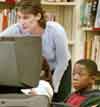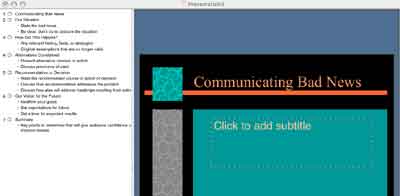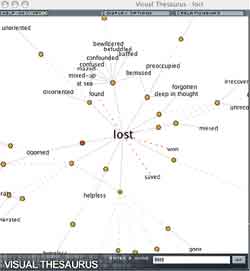During the past decade we suffered fools who promised that the mere possession of certain tools would promote talent, excite imagination and lead to dramatic improvements in learning.
The focus on equipment and technology rather than learning and smart teaching was a distraction from our real work, putting cart before horse and toys ahead of sound learning strategies.
False promises, it turns out these were and marketing pipe dreams, schemes and boondoggles of the worst kind. So now we find ourselves regaining our footing, our sanity and our grip.
Teachers and good teaching are the prime ingredients in the learning recipe. If you want the bread to rise (learning to occur) then make sure you add the yeast (quality teaching) and warm it to the right temperature.
This article takes a look at talent and ways that good teachers can nurture its growth in all children. Many of the suggestions in this article can work in classrooms without access to digital resources, but the main focus is on the advantages and challenges peculiar to digital resources.




What is talent? And who has it?
Are only certain young ones born with talent?
Or can talent be developed? Enhanced? Encouraged?
Can all students get a chance?
In my 38 years as an educator I have seen talent emerge even in dark corners. I have become convinced that talent is innate, widely dispersed and almost universally available. Because I have believed for a long time that all children are gifted, I have resisted the temptation to narrow definitions or just identify small populations and restrict access.
My doctoral dissertation examined the question of whether or not gifted education programs as typically delivered in 1980-84 in New Jersey were consistent with the theory of justice advanced by John Rawls (who recently passed away.)
I found (surprise?) that the programs violated his theory of justice, with the rich getting richer (more access) and the poor getting less access. Joseph Renzulli was pushing the value of broader conceptions of giftedness at that time, and his work inspired me to open my mind to even broader conceptions. Those shifts of perception led to much of my work on student questions, questioning and inventing during these past two decades. And it is this work that shapes the article you are reading.





All Children are Gifted - Really!
When teaching six, seven and eight year old students to write poetry, many of the best poems emerged from children whom few adults would have predicted would have such talent. Given the right chance, warm encouragement and faith, talent emerged in beautifully lyrical ways.
When sharing songs rich in metaphor and visual imagery, the most perceptive interpretations and knowing reactions sometimes emerged from children who were described by teachers as poor students, special ed students and children of little talent.
When role-playing the French Revolution with sixth graders, one academically challenged student became King and used his charisma to charm the group into laying aside their weapons and ideas of revolution.
One young girl, also academically challenged, stood up in front of the whole school and sang with such deep feeling that shivers passed through the entire audience and some of the adults had to wipe away tears.
Talent is there sometimes just waiting for a little light, a little rain, a touch, a smile, a word of encouragement. And good teachers know how to nurture its growth, emergence and development.
Some of this process relates to dreaming.

Dreaming
How does dreaming relate to talent?
- Going deep
- Reaching
- Stretching
- Imagining
- Aspiring
- Wondering
- Believing
Talented production is marked by novelty, originality and spirit as well as grace, beauty and heart.
This kind of production stands in contrast to the cut-and-paste thinking, mere imitations, knockoffs, plagiarism and powerpointless flashy, glib nonsense that is often showcased as evidence of technology's value.
The source of grace, beauty and heart? The producer, child or adult, must be in touch with the spiritual aspects of life and the creative wellsprings that help us to transcend the hohumdrum and mundane. Being in touch comes from a healthy dream life, what aboriginal people might call Dream Time.
The speech that preceded this article was delivered in a conference center located on land sacred to the aboriginal people who first settled Perth. The session was opened by an elder who blessed the group and shared a Dream Time story that led magically to this speech/article as if she and I had rehearsed the sequence.
I had no doubt that magical things were happening.
In order to appreciate dreaming, we looked "Milky Way" by aboriginal artist, Malcolm Jagamarra at http://www.jintaart.com.au/paintingweek/week11b.htm.
“Desert art has given everyone a chance to learn about Aboriginal Dreaming,” says Jagamarra. “Our art reflects not just the land but its mythology, song and dance.”
 Creative production is intimately related to daydreaming, reverie and imagining, but not all schools or teachers reward, encourage or nurture those activities.
Creative production is intimately related to daydreaming, reverie and imagining, but not all schools or teachers reward, encourage or nurture those activities.
In Tim Winton's sweet, allegorical novel, Blueback, the main character is punished in school for daydreaming and wondering about the huge fish he and his mother have befriended while diving for food near their home. He is made to write a hundred times . . .
- I must not daydream in class.
- I must not daydream in class.
- I must not daydream in class.
- I must not daydream in class.
- I must not daydream in class.
But his dream life is so strong that he starts daydreaming while writing the words and does not finish the task, so the teacher sends him home with the chore of writing another hundred times.
- I must not daydream in class.
- I must not daydream in class.
- I must not daydream in class.
This story of Winton's reminded me, of course, of Pink Floyd's song, "Another Brick in the Wall."
The young boy grows up to become a world renowned biologist with a special focus on marine biology despite that one teacher's impatience with his daydreaming.





Students exploring questions in their "wonder boxes" with the help of teacher and librarian in Grand Prairie, Texas. For more on this technique see article at http://questioning.org/may04/wonderboxes.html.
Inspiration . . . Wondrous Moments in Class
How might schools nurture dreaming?
- Encouraging dreaming - The whole school spends time thinking about dreaming, and it is clearly stated as a school goal that dreaming will increase, deepen and flourish. Dreaming is given official approval. Even daydreaming!
- Providing dreamtime - Just as some schools set aside time when everybody reads, a school or a classroom could identify time periods for officially sponsored and sanctioned dreaming.
- Honoring dreaming - Promoting dreaming as well as the reporting of dreams sends a clear message that dreaming is a good thing.
- Celebrating dreamers - The school devotes time and attention to dreamers of the past and present who have made contributions to society and culture so the young ones can see the connection between dream time and creative production.
Cultivating?
- What is involved in preparing the soil?
- Fertilizing
- What else?

How is the growth of talent and skill organic?
The Critical Role of the Teacher
Just as tools, seeds, fertilizers, irrigation and chemicals do not suffice to make a garden grow, students are unlikely to flourish unless we offer support, encouragement, modeling and guidance.
Why does talent sometimes languish?
- Doubt
- Discouragement
- Disillusionment
- Disappointment
- Frustration
- Distraction
- Dilution
- Seduction
-
- What happens to a dream deferred?
- Does it dry up like a raisin in the sun?
-
|
Toolishness is Foolishness.
Great tools do not in themselves create great writers and thinkers. Good teachers can make the biggest difference.
Rich information resources do not in themselves guarantee sagacity and understanding. Teachers can guide the way.
Teachers can make the critical difference in whether these new tools and resources lead to improvements. But impact depends on interventions made by those teachers to help young ones grasp worthy opportunities.
Beware the wizards, the intelligent agents, the templates and the quick fixes!
Sadly, many of the technology "gifts" are unworthy of our support.
- Painting for dummies
- Thinking for dummies
- Inventing for dummies
- Imagining for dummies
Many of the offerings brought to us by technology companies undermine the quality of student work as they step forward with too many generic quick fixes, silver bullets and templates. Their fondness for short cuts and clever little tricks dilutes the quality of the culture, reducing so much production to a tawdry level of cheap, plastic glibness. One need only look at the PowerPoint templates offered by Microsoft to notice the lack of aesthetic values embedded in many of these products.
Click here for samples.
I sit on airplanes and watch hundreds of business people producing slide shows that are horrible from an artistic point of view.
- Bullet One
- Bullet Two
- Bullet Three
- Bullet Four
- Bullet Five
Crummy clip art with complex ideas reduced to simple phrases.
They even have templates for communicating bad news!

Clip art lacks soul and is as much an oxymoron as jumbo shrimp, airplane food and reality TV.
This is not enhancement of talent. It is reductionism at its worst.
Teachers who surrender to these offerings do their students a serious disservice.
What are the traits of an exceptional talent?
As mentioned earlier, talented production is marked by novelty, originality and spirit as well as grace, beauty and heart.
During the keynote, I took the audience to Web sites that displayed the work of some of my favorite Australians or read from their works.
A great writer
Tim Winton
I shared Winton's story of the young boy mentioned above who was forced to write "I will not daydream in school" a hundred times. You can learn more about Tim Winton by going to http://www.theblurb.com.au/Issue12/TimWinton.htm
Some of his wonderful novels . . .
- Blueback
- Dirt Music
- The Riders
- Cloudstreet
A great painter
Russell Drysdale
http://www.ngv.vic.gov.au/drysdale/
A great musician
Kasey Chambers
Australian Country and Western singer/songwriter Kasey Chambers is a double cross-over talent. Her songs sometimes move away from C&W roots toward rock. But she also now crosses over the Pacific to LA, Hollywood, and Nashville with her songs now popular in the States.
We listened to her song "Like a River."
http://www.kaseychambers.com/
A great friend

We looked at talent from the point of view of friendship.
A great parent

We looked at talent from the point of view of parenting.
Path of the Everyday Hero:
Drawing on the Power of Myth to Meet Life's Most Important Challenges
by Lorna Catford, Michael Ray
We looked at talent from the point of view of the every day hero - a community member who does something special for others with little fanfare, recognition or extrinsic rewards.

Students making wine at the Australian
Science & Mathematics School in Adelaide.
How might these new resources help?
We can expect to see tremendous growth of independence along with an increase in the range, the depth, the complexity and the originality of the thinking and production if we do the right thing as teachers.
If a picture is worth a thousand or more words, perhaps the following pictures will suffice to illustrate the concepts . . .
Range

We would hope that young ones would attain a worldly view rather than a parochial or provincial view as the global network gives them a chance to cross their local boundaries, "get out of the box" and transcend ethnocentric, narrow-minded, nativistic bias.
Depth

While we might sometimes suffer from the "poverty of digital abundance," there is also the prospect that young ones will have a richer and deeper collection from which to draw insight and understanding.
Complexity

The variety, the richness and the diversity of the digital market might contribute to the cooking of a stew of many flavors or the making of a quilt of many colors.
Originality


Richness and diversity might provoke or inspire fresh thinking and invention, fusion and synthesis rather than mere imitation, cut-and-paste and template thinking.
But we cannot count on these outcomes simply by purchasing laptops and Internet access.
High speed does not automatically translate into quality and value.
It all depends upon the elders.
- Support
- Structure
- Guidance
- Encouragement
- Deliverance
After a decade of false promises, we are recognizing that teachers and sound practice are the intervening variables most likely to produce the outcomes we desire.
The role of teachers shifts to support the productions of students. They can block learning and indulge in the mind control memorialized by Pink Floyd in "Another Brick in the Wall," or they can deliver students in the sense of launching them or encouraging their flight.
Digital Richness - Scenarios
At its best, the Net provides tools and resources that can enrich the thinking and production of students. In a future article we will also explore the dark side of the Net, the seductions, temptations and distortions of digital experience.

Scenario One
Totalnews.com
This site tries to offer all the online newspapers in the world - one stop shopping for global news. Our students have the opportunity now to see how people in other lands report news events as they happen. These alternative sources enrich their perspectives and might make them less vulnerable to news feeds, propaganda and bias.
You can test the value of this site by selecting a "hot topic" and see how it is being handled in other countries. It works best to click on "World" and select a newspaper from the list of countries.

Scenario Two
Visual Thesaurus
This site supports a dynamic and interactive kind of word exploration as one is greeted by a cluster diagram like the one above after entering an important concept. Clicking on elements produces a new diagram with associations farther afield. As a tool to explore meanings, this Web site is dramatically different from its print forebears. An small annual subscription fee is charged.

Scenario Three
http://www.readprint.com
A wide-ranging collection of great literature and various reference works, this Web site supports powerful conceptual browsing and grazing as the student performs word searches across the collection.

Scenario Four
The Theme Page from EDNA provides a list of software programs and sites that promote student thinking and imagination.
- Reason!Able: Enabling Better Reasoning
- Inspiration - visual thinking and learning software
- Graphic Organizer
- Triptych
- Word Peace
- JigZone.com
- Kidspiration
- Puzzlemaker - Discovery Channel School
Scenario Five
Photo-Synthesis with PhotoShop™

The Crab Drawing Evolves
Using PhotoShop™ I demonstrated how such programs can support synthesis by facilitating variations on a theme, taking the crab drawing originally drawn with felt pen by Waka, a young student, first published in an FNO article, "Beyond ClipArt: Encouraging Children's Own Drawings" in June, 1999.

Noticing a resemblance to a Swiss Army Knife, perhaps the student plays with color.

Experimenting with filters, the student tries "ocean ripple" but doesn't like the results, so he takes advantage of the history feature of the program to undo the damage and try something different until the effect is pleasing.


